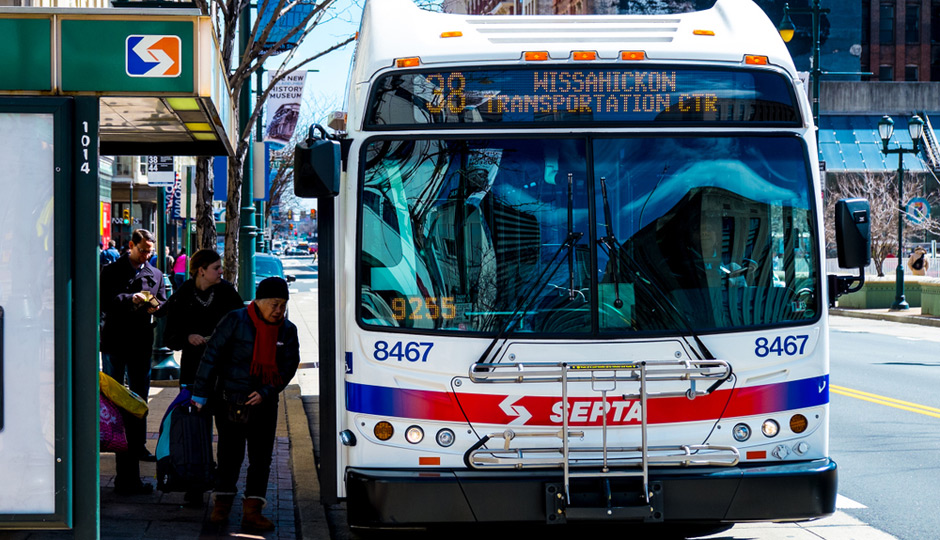SEPTA Got Better with Joe Casey at the Bat

Running a large transit system may just be one of the most thankless tasks anyone could take on. You have the responsibility for moving hundreds of thousands of people daily, usually with less money than you’d like to have for the job. Many of those people you move will not like the way your employees get them there, or fail to do so in a timely manner—and give them bad attitude while they ride. And chances are that the elected officials to whom you must answer will be among your most demanding critics while doing little to enable you to answer the criticism.
It’s a rare individual who manages to surmount even some of this to enact real change and improvement. The last person to do this at SEPTA was David Gunn, a name that’s become virtually holy among transit industry professionals for his ability to make every transit system he touched better, with the possible exception of his last, Amtrak.
SEPTA’s current general manager, Joe Casey, is Gunn’s equal—or his superior— in just about every measure. As he now takes his valedictory lap prior to his retirement Sept. 30, it might be worth pointing out why.
Let’s start with the admirable accomplishment of doing more with less while fighting for more, the main reason the American Public Transportation Association gave SEPTA its Best Large Transportation System award for 2012. About two years after Casey began his tenure as GM, Act 44—Pennsylvania’s last attempt to provide dedicated funding for all forms of transportation in the state, including mass transit—collapsed when the federal government nixed the state’s request to toll I-80 to provide those funds. Immediately, SEPTA’s annual funding from Harrisburg was cut in half. Casey responded to the blow by holding service harmless, a sharp departure from his predecessors, who year after year went hat in hand to Harrisburg with the message, “Fund us or our service gets it.” Instead, the maintenance and reconstruction program absorbed the shock.
But the system still needed maintenance, and under Casey, its maintenance staff became experts at applying the patches that kept critical infrastructure from collapsing completely. That you can still ride a Regional Rail train past Swarthmore today is testimony to SEPTA’s ability to hold things together with little more than duct tape and baling wire for years—long enough to last until Act 89 plugged the hole blown in Act 44 two years ago.
Meanwhile, Casey proved an effective advocate for that increased funding. The slow death he outlined for the agency — should SEPTA continue to be starved for money — helped focus both the region’s and Harrisburg’s attention on the importance and value of mass transit to Southeastern Pennsylvania and the state as a whole.
And he managed to effect an attitude adjustment among the staff, starting with a new emphasis on customer service reflected in creating an assistant general manager position devoted to that mission. Not only did the riders find a new attitude among the workers, but the entire workplace environment improved to the point where last year, Forbes ranked SEPTA No. 33 on its list of “America’s Best Employers.” Not only was it the highest-ranked transit agency on the list, but among transportation providers of all kinds, only Southwest Airlines and JetBlue Airways outranked it, and the only government agencies to rank higher were the Fire Department of the City of New York and the University of Michigan Health System.
And for the first time in decades, there’s talk about adding new rail service rather than cutting it back, the biggest manifestation of a service planning process that’s become more forward-thinking and responsive to riders.
That doesn’t mean everything’s been hunky-dory on Casey’s watch. The agency is still trying to figure out how to handle moving huge crowds for special events; his tenure began with the Phillies parade fiasco of 2008, and there’s certainly criticism enough of its approach to handling the crowds expected to descend on the system when Pope Francis comes to town just before he retires. But at least neither Casey nor those under him are claiming they mastered this difficult task, in sharp contrast to the laughable claims SEPTA made about clearing out the attendees of the Live 8 concert in 2005, its previous moving-the-masses debacle.
And then there’s SEPTA Key. Yes, we know it’s coming; we can see the hardware for it all over the system now. But it was supposed to be here by now, not ready for a slow rollout sometime next year, or maybe the year after that. This may be the one true blemish on Casey’s record.
When Joe Casey took the helm, SEPTA was still telling us, somewhat apologetically, “We’re getting there.” It may not have fully completed the journey, but it’s come a very long way under Casey—maybe even far enough to say that it has arrived. We who ride owe him our thanks for leaving SEPTA in far better shape than he found it and laying the groundwork for its future improvement.
Follow @MarketStEl on Twitter.


